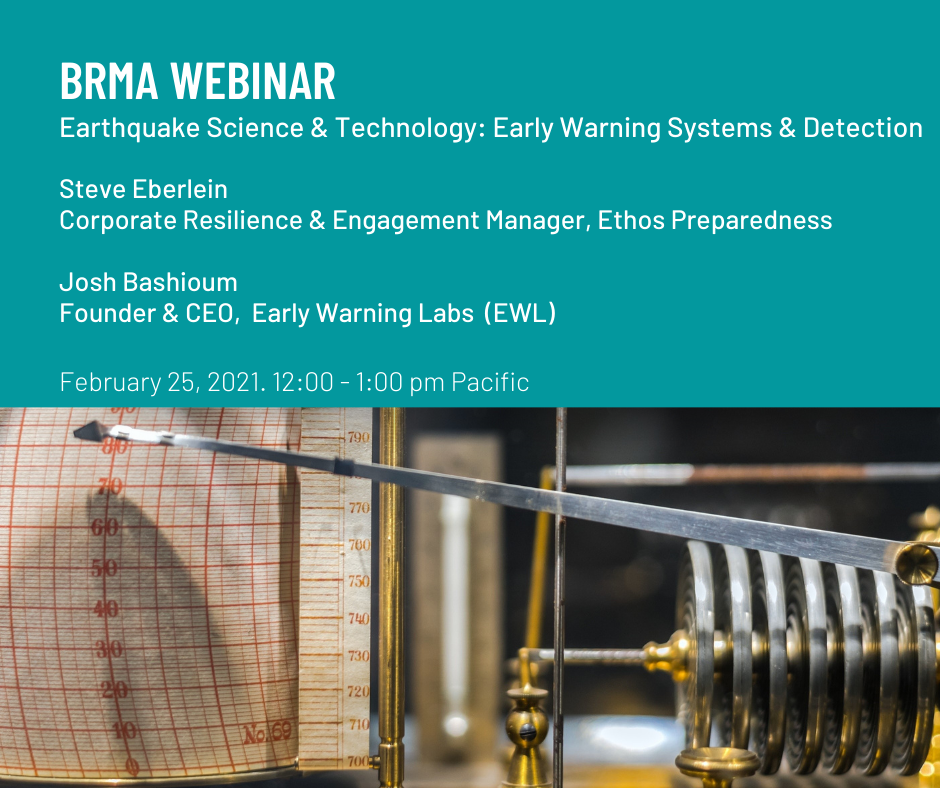
Earthquake Science and Technology: Early Warning Systems and Detection
Earthquake Early Warning systems are operational in several countries around the world, including Mexico, Japan, Turkey, Romania, China, Italy, and Taiwan. The west coast of the US is the newest entrant with full public and private availability in California and Oregon, and Washington’s participation soon to follow. The onus is now on us as earthquake zone residents and business operatives to employ ShakeAlert’s capabilities to keep our families, assets, and enterprises prepared for the inevitable seismic events that await us. This program is an opportunity to ask the basic questions and to imagine aloud the benefits of this game-changing technology. The program will include:
Earthquakes 101 – The Anatomy of California and Pacific Northwest Earthquakes.
- The difference between the San Andreas Fault System and the Cascadia Subduction Zone
- The correlation between fault length and magnitude
- The roles that magnitude, distance and soil play in our earthquake experience
ShakeAlert
- The difference between earthquake prediction, earthquake forecasting, and Earthquake Early Warning
- What a ShakeAlert is and how it’s produced
Earthquake Early Warning applications and availability
- ShakeAlert apps and personal protection
- ShakeAlert automated capabilities
- ShakeAlert workplace applications
- Geographic availability
Presenters
Steve Eberlein and Josh Bashioum
Webinar Registration
A Signup email has been sent directly to BRMA members with registration details.
BRMA Members: Please login for additional registration information including a registration link.
Become a Member to Participate!
Wish to attend, and are not a member? Join today!
Questions
program@brma.com




